The thing about an African safari is that, at some point during the trip, someone will bring up The Lion King. Spot a lion lounging under the shade of a marula tree and they will say, “He looks just like Mufasa!” Come upon a pack of hyenas, and someone will call out, “Ooh, it’s just like in The Lion King!”
Which is why, to break up the monotony, I recently asked one of the staff at Ngala Tented Camp whether Wakanda was nearby. “I learned so much about Africa from watching Black Panther”, I told the lovely Abigail. This was right after I’d said I’d grown up in Australia and she’d replied, “Oh, I’m scared of Australia. There’s always creatures there, like in the bush!”
“We don’t have lions, though,” I told her. “Great big ugly spiders dripping with venom, yes, but no lions.”
In the local Xitsonga language, ‘ngala’, after which the camp is named, means lion. It turns out they’re not as bountiful out here in the African bush as you might expect from watching The Lion King. During our four-night stay, we saw the same heavy maned lion, his wife, her sister and baby cub on two separate occasions. The poor guy had his entire lower jaw missing – it had been torn off during a vicious brawl some years ago.
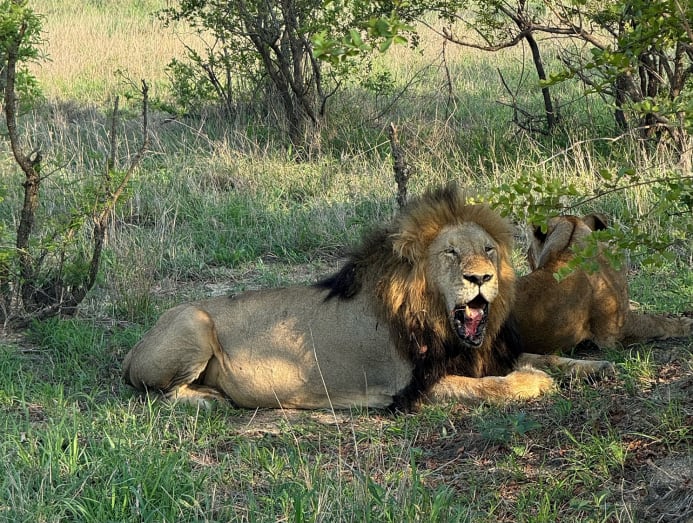
“He can still chew, though,” said Marcus who drove us around on our twice-daily game drives in a massive four-by-four. I took that to mean we shouldn’t pet the lion even though both times we saw him, he just lay there under the shade of a Magic Guarri tree, giving the impression of a bored passenger waiting his turn in the airport immigration line.
One day, after driving through scrubland dense with silver cluster-leaf trees and russet bushwillows, we came upon a young leopard who’d just killed a baby impala, currently dangling from her jaw like dental floss.
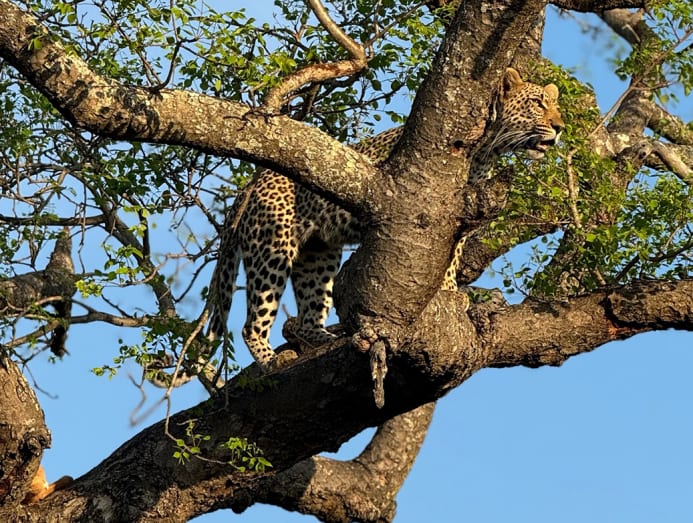
News travels fast out in the bush because in no time at all, three other four-by-fours came crashing through the shrubs. Everyone snapped away on their phones, though in one truck, a guy aimed a camera with a telescope the size of a bazooka. I wondered how many likes he’d get on Instagram that night.
You could tell the leopard was irritated because with the impala still firmly wedged in her jaw, she scrambled up a tamboti tree to get away from the scrum of snap-happy humans below. As physical feats go, this was way up there with Wonder Woman bursting into the law court at the start of Justice League.
My first astonished thought was, leopards can climb trees? My second was, what do impalas taste like? “Very nice,” our tracker Ernest told us in a wistful tone that made me wonder about the kind of buffet spread available in this part of South Africa.
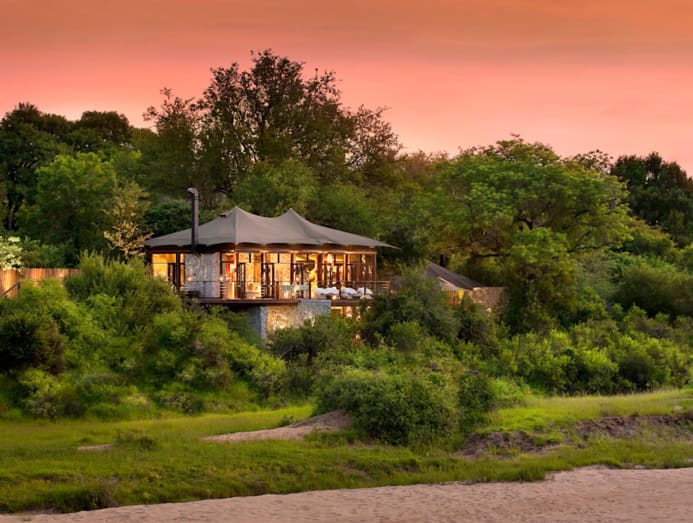
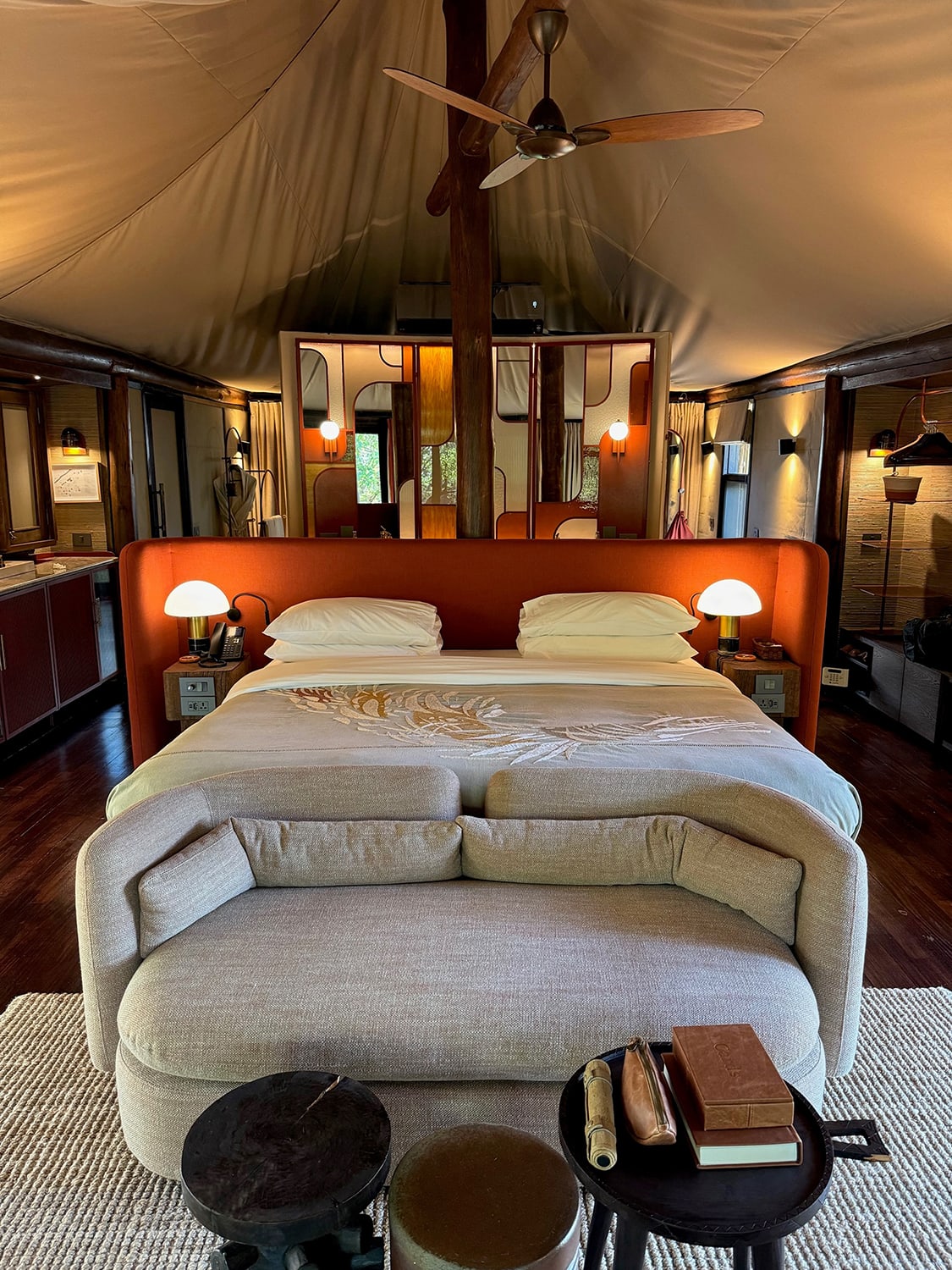
That night, I could barely sleep, mentally replaying the graceful agility and speed with which the leopard had bounded up the tree. I also couldn’t sleep because what I later learnt was a baboon was tap-dancing on the timber deck outside my tent all night.
Ngala has just nine tents, though, to quote David Sedaris, these are tents the way Shake Shack is a shack. It’s an oasis of poshness, though one built on stilts over the land to minimise its ecological impact.
The Timbavati riverbed which runs along the camp is normally dry for years at a time. In 2023, a year’s worth of rain fell in two days. The deluge overflowed the river banks, washing away huge chunks of Ngala.
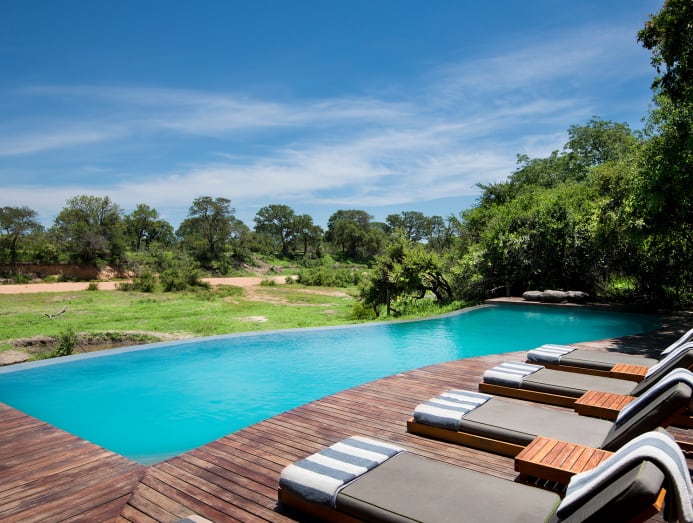
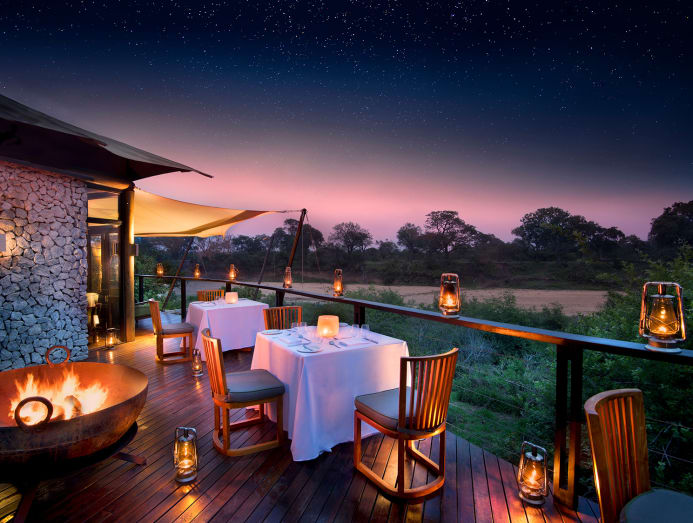
This past November, the resort reopened after extensive rebuilding and renovations which included a new gym, spa and swimming pool. The tents are huge, a spacious outdoor deck with outdoor bathroom courtyard adding 40 s qm to the 60 s qm interiors which are dressed with timber floors, local Shangaan embroidery on ceiling panels, and dividing walls made of large river stones. If they’d ever shown King T’Challa’s bedroom in Black Panther, it probably would’ve looked just like an Ngala tent, it’s that posh.
Which is just a roundabout way of saying that we weren’t exactly roughing it. Not for US$1,300 (S$1,761) per person per night. So that’s one thing to consider if you’re looking to cut corners on your safari budget.
Before I’d set out for Johannesburg en route to Ngala, my friend Nicole emailed to say she’d just returned from safari. “We economised and slept on the roof top of our caravan under the stars.”
“But how did you pee?” I asked.
“Very carefully,” she replied. “In case there some animals hiding in the bush.” I noted she didn’t say ‘wild animals’, though I guess that’s a given in this kind of neighbourhood.
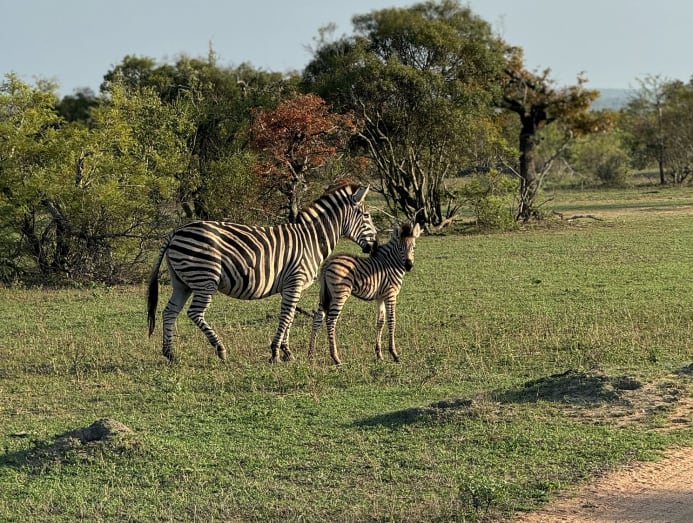
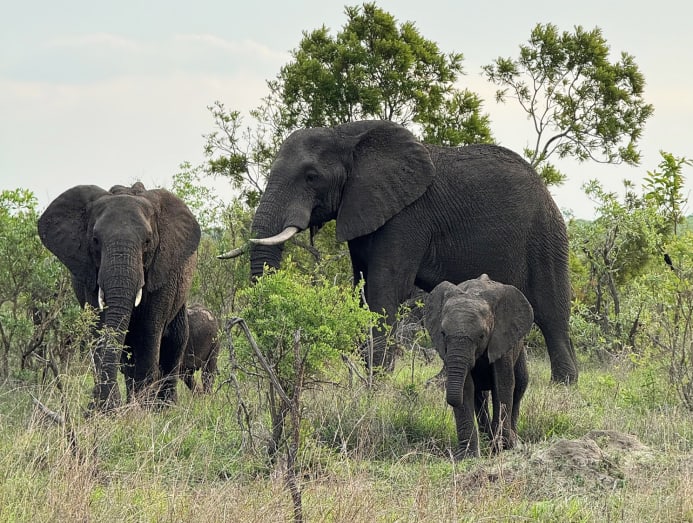
Not that any of the animals we saw on our drives cared about the quality of our lodgings. Out here in the bush, silhouetted by mopane trees whose leaves mimic fluttering butterflies, flame lillies and sycamore figs trees, it’s a brutal world that’s every bit as stunning as a Nat Geo special. Also, everyone speaks in whispers in case the leopard feeding up in the tree hears you and decides she wants a side of human sashimi to pair with her entree of impala ceviche.
“Don’t worry,” Ernest said. “Animals think our truck is a huge animal, so they won’t attack.”
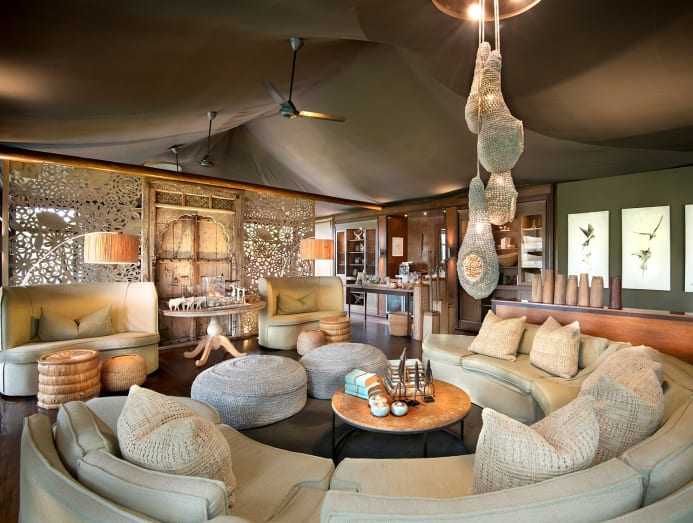

The guy had eyes of a superhero. We could be speeding through the night back to Ngala for cocktails and dinner and, still, he’d stop Marcus the driver because he wanted us to see the chameleon that was completely camouflaged by the leaves of a bushy bush.
One morning, he pointed out what looked like unremarkable white pebbles in a sandy patch. “Hyena poop,” he announced. “Hyenas have a high calcium diet because of the bones they eat. So their poop is white. The leopard tortoise eats hyena poop because their diet is low in calcium.”
“I don’t care how low my calcium level is,” I murmured to my friend Kelly next to me. “I would never eat someone else’s poop.”
“I know right?”
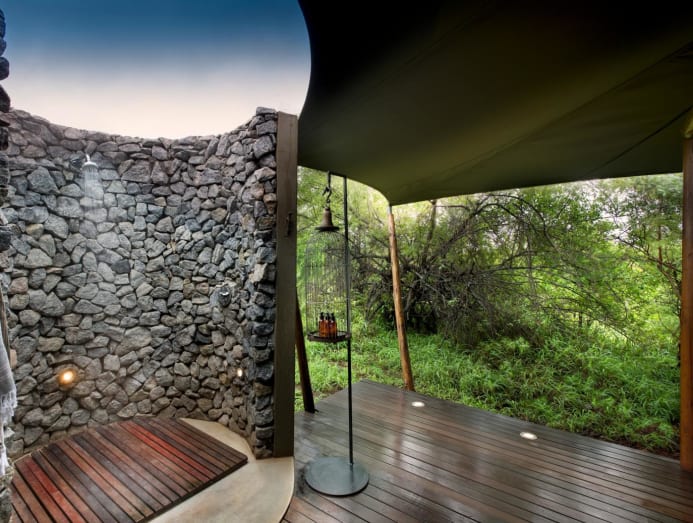
Save for the cheetah, we saw everything. If it was in The Lion King, even if it was a blink-and-miss-it supporting role, we saw it. It was as if everyone was taking a break from filming the sequel and decided to stretch their legs. One minute, we were cooing over a herd of elephants and their babies crossing a dirt track to lunch on leaves at the next stand of acacia and merula trees; the next, we came across a tower of giraffes, their impossibly long necks sticking up over the tree-line like spotted power poles.
We peered at bateleur eagles drifting on air currents, and white-backed vultures up in their nests looking down on passing herds of kudu and black, wrinkled wildebeests. Once, we came upon a black-backed jackal feasting on a zebra leg, and a few seconds later, the giant jaw of a hippo yawned wide open in a watering hole.
One late afternoon, a rhino the size of a golf cart hurried into the shrub as if late for the plane. On another, a guinea fowl, resplendent in its spotted plumage, gossiped with an ibis in the bush, not too far from a couple of worried-looking warthogs. Just like in The Lion King.
After a while, I stopped snapping on my iPhone. It was all too much gorgeousness. My brain was overwhelmed by the idea of that much fabulous, Instagramable wild life contained in 14,700 ha, the size of Ngala’s private reserve. It was as if we were all squeezed into a room with Cindy, Naomi, Christy and Linda – you just didn’t know where to look.
In any case, night was descending, the sky turning deep blue with flashes of gold from the setting sun. Soon, even the air changed, the dry heat of the soft African dusk giving way to a cool waft that held notes of ozone, uncut green grass and petrichor.
“Maybe we’ll see a cheetah tomorrow,” Marcus called out over the drone of the four-by-four as we charged along the dirt track through the night towards Ngala where awaited a dinner of Karoo lamb lollipops with korma sauce, and ostrich and brie burger.
Hakuna matata, I thought, staring up at the black-domed starry sky high above. After everything we’d already seen, it just felt greedy to ask for anything more.

























